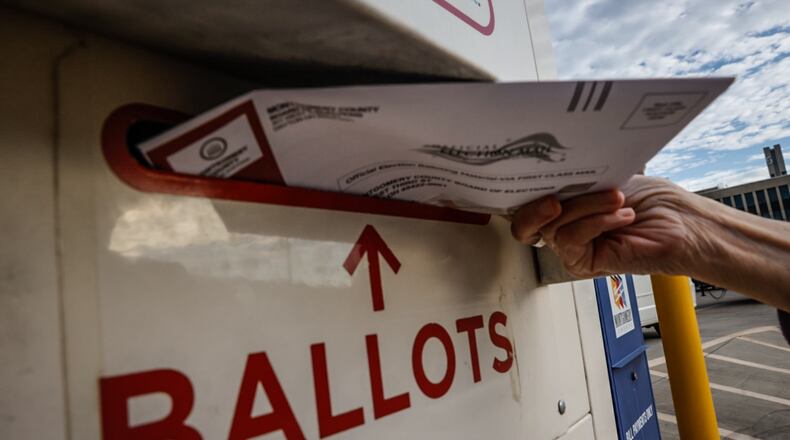Ohio has roughly 8 million registered voters, and nearly 1.1 million of them voted by mail in the presidential election last November, according to data from the Ohio Secretary of State.
Congress and the state legislature both have the power to regulate federal elections, but elections for state and local offices are governed by the Ohio General Assembly, explained Ohio Secretary of State spokesperson Ben Kindel. These rules are stipulated both in the U.S. Constitution and the Ohio Revised Code.
Trump issued a sweeping executive order earlier this year that, among other changes, would require documented proof of citizenship before registering to vote. Parts of that executive order on elections were swiftly blocked by the courts, on the grounds that Congress, and not the president, sets federal election rules.
But Trump’s Truth Social post on Monday promised another election executive order to “help bring HONESTY to the 2026 Midterm elections.” He said his team was working to draft another executive order that would ban mail-in voting, as well as voting machines and tabulators.
All Ohio counties provide absentee voters who apply to receive a ballot by mail with a paper ballot. Those ballots can either be mailed to a person’s local election board, dropped off at the election board by the voter or placed in a ballot drop box.
Voting rights advocates say mail-in voting is a way for older adults, people with disabilities, military members, people who lack reliable transportation or people with other daily obstacles to participate in democracy.
According to Ohio Secretary of State data, nearly 31% of early voters cast a ballot by mail. The largest demographic to participate in early voting for the 2024 general election was adults aged 65 and older.
The League of Women Voters, which has Ohio and Dayton chapters, has concerns with voter accessibility.
“Free, fair, and accessible elections are the cornerstone of a healthy democracy,” said League of Women Voters CEO Celina Stewart. “President Trump’s call to eliminate vote-by-mail is a direct attack on Americans’ freedom to vote.”
Stewart said the League is watching out for Trump’s promised executive order and will use “every tool in our toolbox to push back on these threats to our free, fair, and accessible elections.”
Trump claimed the U.S. is the only country to use mail voting. This isn’t true, as other nations like Germany, Switzerland and the United Kingdom use voting by mail in their elections.
He also doubled down this week on claims that there is “MASSIVE FRAUD” due to mail voting.
Voting fraud in Ohio, as well as across the nation, is rare.
Kindel said the Ohio Secretary of State’s Office and county election boards take numerous steps to ensure election integrity.
With voting machines specifically, all equipment is certified for accuracy by state and federal examiners. And machines are also tested by bipartisan teams prior to an election and are never connected to the internet.
All of Ohio’s 88 counties can choose the type of system and equipment they use to conduct their elections. But every vote in Ohio is cast on a paper document, whether it’s recorded by hand or by a voting machine. This creates a “voter-verifiable paper trail,” Kindel said.
Ohio’s current voting rules went into effect in 2023 — some critics have called it the strictest voting law in the nation.
The Associated Press contributed to this report.
About the Author

